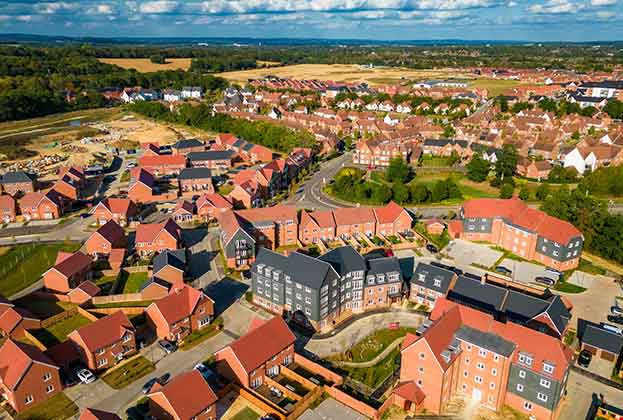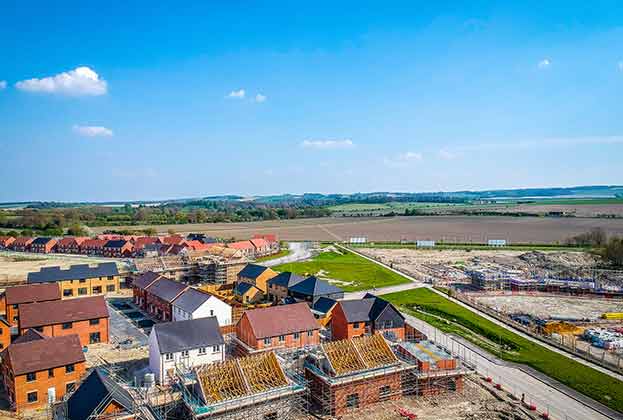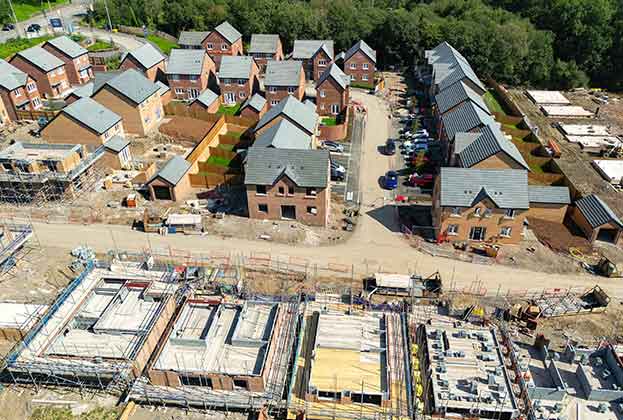The impact on developers and housebuilders is that frequently the affordable housing element on schemes cannot be sold, leading to schemes stalling, planning applications being revisited to amend on-site provision to alternate tenures, or requiring conversion to a payment in lieu.
These conditions fundamentally alter the required approach to planning for residential schemes across London, and the reliance on an automatic level of affordable housing (whether 35% or higher) now carries significant risk, to the point where such an approach may no longer work.
The Registered Provider (RP) market
The reasons for the change in the RP market are a mix of well-known short and mid-term economic factors, regulatory requirements, and particularly a change in the criteria that applies to grant funding affecting how RPs fulfil their agreed programme targets.
Affordable housing grant funding in London is overseen by the Greater London Authority (GLA), with parameters set by the Department for Levelling Up, Housing and Communities, normally over 5-year periods. At the start of a programme period, RPs bid for funding based on the number of homes they expect to deliver. Prior to the 2021-26 programme, homes delivered through S106 contributed to the overall number of homes within an RP’s programme targets, even where grant could not be applied.
For the 2021-6 programme, S106 homes no longer count towards programme targets, which removes one reason for RPs to purchase S106 homes.
The impact has only been felt over the last year and a half because the full implementation of the 2021-6 programme was delayed, since the 16-21 programme was extended by two years due to Covid.
RPs’ wider programmes include those schemes where RPs have purchased land and procured construction directly; understandably RPs have been hit by the industry-wide increases in construction costs and the impact of schemes being required to change to meet the Building Safety Act requirements, with the effect that RPs have reduced financial capacity for their development pipelines.
Beyond newbuild stock, the cost of repairs and maintenance to assets under management have escalated, along with the requirement to meet carbon targets. The cumulative impact of the cost changes reduces RPs ability to take on new projects.
Over the longer term, as RPs have grown in size, many have concentrated on larger schemes, with many seeking minimum numbers of homes at (say) 50 for a single tenure but the largest organisations seeking over 100 affordable homes on any site. S106 legislation has a 10-unit threshold, above which the policy target is that 50% of homes are provided as affordable. Clearly there is an element of delivery where policy is out of step with the majority of organisations that own and manage the stock.
The for-profit sector, whilst less encumbered by historic stock, also has limited financial capacity and cannot fully replace the traditional sector. Whilst they play a vital role in delivery of affordable housing, they don’t have the experience delivering the more complex or higher-risk affordable housing projects that the traditional sector has taken on.
Finally, the perception of S106 homes has suffered in RPs’ eyes, frequently citing that less control over design, planning and construction management creates variance in the quality of the end product.
When does grant funding apply?
The GLA’s focus is on additionality, i.e. to fund homes only where affordable housing is provided over and above the amount secured in a planning consent.
Its current stance (as informed by central government) is that grant will only automatically apply to schemes that deliver 40% affordable housing by habitable room (unless on public land/estate regeneration).
Those sites that have planning permission for lower amounts are still required to provide 40% affordable housing before automatically qualifying for grant funding. A requirement for grant funding can be demonstrated through Financial Viability but grant will not apply to the first 20% of any scheme.
The recently announced Accelerated Grant Funding programme provides fixed grant rates for schemes that achieve 40%. Beyond this there is no set allowance in respect of grant for new projects, and the level of grant would be established through negotiation between the RP and the GLA.
Minimum numbers of homes
The S106 affordable threshold of schemes larger than 10 homes was conceived in an entirely different development market, against a backdrop where RPs were smaller organisations and were not developing homes in their own right to anything like the same extent as today.
Today’s RP market includes organisations that own over 50,000 homes, with development programmes of (until recently) approximately 2,000 homes per year.
In order to achieve reasonable efficiency in resident and asset management, it is entirely logical that many RPs will not take on smaller numbers of new affordable homes, regardless of tenure, and this can mean that S106 packages of even 50 or more affordable homes are too small.
A growing trend we have identified is schemes with consent being forced to return to planning to convert on-site affordable housing into a payment-in-lieu, purely due to the lack of demand for affordable housing, which creates further planning risks.
Developers and LPAs therefore need to consider at the point where schemes are being proposed and determined whether the affordable housing is capable of being delivered on site at all, or whether an alternate approach is required.
Impact on planning strategy
The potential to secure grant funding in the current market is fundamental to the likelihood of securing an RP partner, and therefore delivering affordable housing.
The parameters for grant funding are fixed for schemes that start on site before March 2026, with a focus on additionality.
Irrespective of viability, affordable housing secured at 35% without grant is not currently eligible for grant funding and in the current market is unlikely to be taken on by RPs.
Since occupation restrictions mean that a proportion of market homes cannot be occupied before affordable homes are delivered, the consequence is that without an affordable partner, sites cannot come forward.
These challenges in the market undermine the rationale for the Fast-Track planning route. Since the economic shifts in the market have created apparent challenges in delivering affordable housing, there are many schemes that cannot meet the Fast-Track thresholds in any case.
The unavoidable implication is that the market restrictions require developers to advocate an alternate approach to affordable housing, both to have a scheme that might be viably delivered, and in order to stand a chance of securing grant funding that might enable a greater quantum of affordable in conjunction with an RP partner.
Whether or not schemes can achieve higher proportions of affordable, since RPs will frequently not take on smaller numbers of homes, developers should consider the RP position before advocating a given affordable proposal.
We’d recommend engagement with RPs at pre-application stage to inform scheme design and planning strategy, as well as opportunities for grant funding or alternative delivery.
Further information
Contact Lydia McLaren or Mark Breen

.jpg)



.jpg)



.jpg)
.jpg)